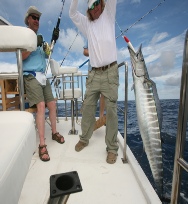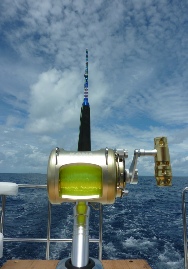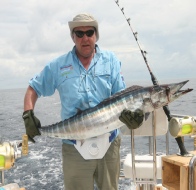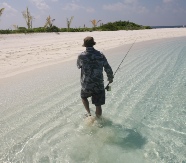© 2014 Gary Smith Fishing Ltd All Rights Reserved










Proudly Associated With


Lines play an important role in fishing and are usually selected by width according to their particular function. Choosing the wrong thickness of line can lead to spending a memorable night without catching anything. Choose the thickness of line according to the area to be fished. For example, for shore fishing in pure sand sea beds a thickness of 0.14 to 0.26 mm is best, coupled with a tapered shock leader. When fishing a mixed sea bed, of say weed beds and sand or shingle and sand, it would be best to use anywhere between 0.20 to 0.30 mm. If fishing amongst rocks and weed 0.35 to 0.45 mm or thicker is used as the line will be subject to large amounts of strain and abrasion.
When distance casting fishing a pure sand sea bed if possible use a conical spool together with 0.14 to 0.26 line. The very thin line will then fall away from the spool easily when casting. This achieves the distance you need to position your bait as far out as possible where there will hopefully be more fish. A line this thin has to be used with a tapered shock leader as it is impossible to attach a weight to a line this thin and cast as the line would obviously break. A tapered shock leader is a length of line, usually 15 metres long, tapering from 0.225 at the main line end, so it is a similar thickness to the main line, to 0.50 at the terminal rig end. This means we are casting with the thickest line attached to the terminal rig and weight so the shock leader takes the strain of the weight being cast out. The leader is attached by a knot to the main line. A blood knot would be suitable, but the knot must be tied very well and left tidy with no loose ends as it could snag when casting. Always remember to wet the line with saliva before tightening any knot – this reduces friction and avoids risk of damage to the line. Shock leaders are usually supplied in rolls of five. The other option for long distance casting is tapered line. These usually come in rolls of 220 metres and the thickness gradually increases from 0.18 to 0.50. If you are not confident yet with knots then this is probably the way to go as there is no knot to grab on the reel, rod rings or create a kink in the line. The only disadvantage of using tapered line is that, once broken, to continue using the tapered line a shock leader is needed to join the tapered line to the rig. For fishing a mixed sea bed of shingle and sand or weed and sand a 0.30 line thickness would be recommended. This would avoid the use of a shock leader.
For general pleasure fishing this is without doubt the best to use. A good tip is to use fluorocarbon line as these are practically invisible in water due to its very low refractive index. It does not absorb water therefore maintaining density and fast sinking properties. This is especially important in the Mediterranean Sea as the water is so clear. You will notice that lines come in all different colours and if you want to see where the line is whilst fishing then a coloured line may be the answer. After all, the fish bite on the terminal rig, not the main line. I however, always use transparent line as I prefer the line not to be seen in the water Only a personal thing, and there are those who say the colour of the line may attract fish. I will let you make your own minds up on that. Fluorocarbon line is also unbeatable for making terminal rigs and attaching hooks to.
You will also come across low memory line, this refers to the way in which we take the line out of the packaging. Low memory line will not retain its `coils´ as it is loaded onto the reel or after casting, therefore avoiding tangling which can cause lots of problems. For fishing in rock and weed a thicker line must be used for obvious reasons. Snags and abrasion caused by the line rubbing against sharp edges means that a thin line would be damaged very quickly and fish and terminal tackle would be lost. A line of 0.35 – 0.50 mm thickness is therefore recommended for this type of fishing for those reasons. For spinning a 0.20 mm line will suffice if fishing with a bubble float and non weighted lure on the surface. A 0.30 mm line would be more suitable when using a weighted lure as the drag of the lure beneath the surface of the water must be taken into account. If in doubt it is always better to use a little thicker line. Then you know that when you reel that dream fish in the line will be less likely to break.
Registered Copyright © Gary Smith & Luigi Mateos
Back
| Address |
| Contact Us |
